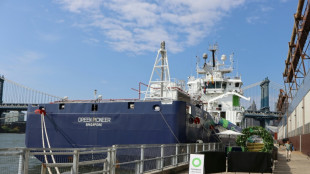
-
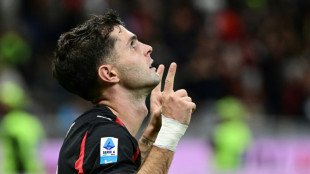 AC Milan beat champions Napoli to make Serie A title statement
AC Milan beat champions Napoli to make Serie A title statement
-
Scores arrested on second day of Morocco protests: NGO

-
 'One Battle After Another' debuts top of N. America box office
'One Battle After Another' debuts top of N. America box office
-
Two dead after US shooting, fire at Mormon church
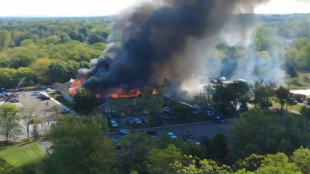
-
 Mitchell open to coaching first Women's Lions in 2027
Mitchell open to coaching first Women's Lions in 2027
-
Vagnoman sends Stuttgart past Cologne in Bundesliga
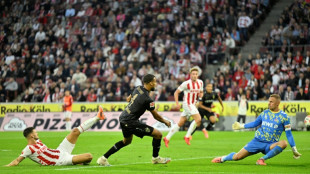
-
 Stars turn out for Armani's final collection in Milan
Stars turn out for Armani's final collection in Milan
-
Massive Russian drone and missile attack kills four in Kyiv

-
 Arsenal showed 'ambition' of title winners in Newcastle win: Arteta
Arsenal showed 'ambition' of title winners in Newcastle win: Arteta
-
Free Picasso park to open in Paris in 2030
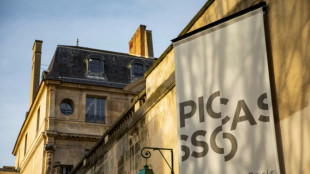
-
 Barca beat Real Sociedad to top Liga as Yamal returns
Barca beat Real Sociedad to top Liga as Yamal returns
-
Arsenal strike late for 'beautiful' Newcastle win, close in on Liverpool

-
 Barca beat Real Sociedad to go top as Yamal returns
Barca beat Real Sociedad to go top as Yamal returns
-
Kildunne says 'no reason' England can't win Rugby World Cup again

-
 Arsenal strike late to beat Newcastle, close in on Liverpool
Arsenal strike late to beat Newcastle, close in on Liverpool
-
Lyon win at Lille to stay level at top of Ligue 1 with PSG

-
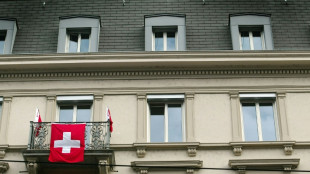 Zurich votes to ban petrol leaf blowers
Zurich votes to ban petrol leaf blowers
-
Starmer warns UK Labour in 'fight of our lives' as party meets

-
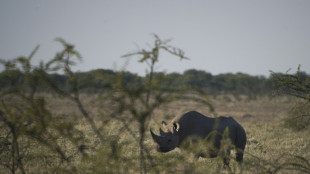 Namibia deploys 500 soldiers to fight Etosha fire
Namibia deploys 500 soldiers to fight Etosha fire
-
Ryder Cup start host steps down after expletive-filled McIlroy chant

-
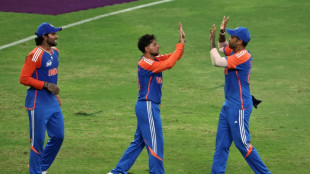 Kuldeep helps India bowl out Pakistan for 146 in Asia Cup final
Kuldeep helps India bowl out Pakistan for 146 in Asia Cup final
-
Dominant Europe on the brink of historic Ryder Cup triumph

-
 Injured Hovland withdraws from Ryder Cup as Europe moves closer to win
Injured Hovland withdraws from Ryder Cup as Europe moves closer to win
-
Roma beat Verona to join Napoli at Serie A summit

-
 Watkins sparks Aston Villa revival for first Premier League win
Watkins sparks Aston Villa revival for first Premier League win
-
Pogacar defends cycling world title with solo run

-
 No handshake again as India bowl against Pakistan in Asia Cup final
No handshake again as India bowl against Pakistan in Asia Cup final
-
Zverev downs racket-smashing Moutet in Beijing as Gauff digs deep
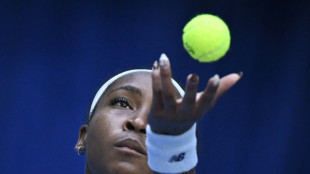
-
 Leverkusen's Schick set for spell on sidelines
Leverkusen's Schick set for spell on sidelines
-
Massive Russian missile and drone barrage kills four in Kyiv
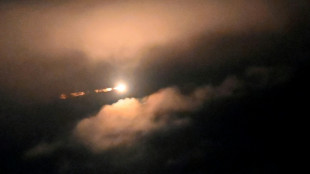
-
 Indian actor-politician's aides charged after rally stampede kills 40
Indian actor-politician's aides charged after rally stampede kills 40
-
England still have 'another peak to climb' after Women's Rugby World Cup triumph

-
 Real Madrid's Carvajal Clasico doubt after calf injury
Real Madrid's Carvajal Clasico doubt after calf injury
-
Moldova votes in tense polls, torn between EU and Russia

-
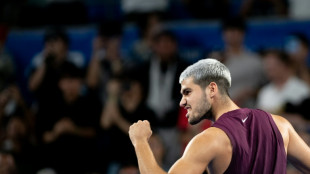 Alcaraz makes light of injury to reach Japan Open semis
Alcaraz makes light of injury to reach Japan Open semis
-
Slips, salt and stripes: key looks from Milan fashion week

-
 Gauff digs deep to keep China Open title defence alive
Gauff digs deep to keep China Open title defence alive
-
Russian missile and drone barrage kills four in Kyiv

-
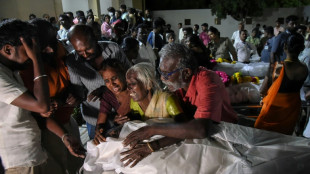 Massive crowd, chaos preceded deadly India rally stampede
Massive crowd, chaos preceded deadly India rally stampede
-
Russian missile and drone barrage kills four: Kyiv

-
 Iran denounces 'unjustifiable' return of UN sanctions
Iran denounces 'unjustifiable' return of UN sanctions
-
Emotional Marquez in tears after winning seventh MotoGP title

-
 Emotional Marquez win seventh MotoGP world championship
Emotional Marquez win seventh MotoGP world championship
-
Russia pounds Ukraine with 'hundreds' of drones and missiles: Kyiv

-
 Wallabies record-holder Slipper hints Perth could be final Test
Wallabies record-holder Slipper hints Perth could be final Test
-
Son brace fuels LAFC as Messi frustrated in Miami draw

-
 US actress-singer Selena Gomez weds music producer Benny Blanco
US actress-singer Selena Gomez weds music producer Benny Blanco
-
Pakistani parents rebuff HPV vaccine over infertility fears

-
 Women's cricket set for 'seismic' breakthrough at World Cup
Women's cricket set for 'seismic' breakthrough at World Cup
-
New Zealand fly-half Barrett out of Australia rematch


Mapping Ireland's peatlands to help cut carbon emissions
Mapping more accurately than ever Ireland's peatlands, which are vital as carbon sinks but whose boundaries can be hard to determine, could help fight global warming, researchers say.
Ireland is pockmarked with patches of dark brown peat soil that make up at least 20 percent of the land cover, according to Eve Daly, a geophysicist at the University of Galway, who co-led a groundbreaking project on finding peat.
"Peatland soils contain comparable amounts of carbon to the likes of rainforests so a more accurate map can lead to better land management decisions and mitigate against greenhouse gas emissions," Daly told AFP.
Her research team developed a new mapping approach using gamma radiation measurements to identify for the first time "transition zones" -- typically hidden under forests and grasslands -- where the soil changes from being peat to mineral-based.
Daly says the area of soil in Ireland considered "peaty" has increased thanks to a new colour-coded "peat/non-peat" map produced by the researchers.
"Improved mapping at higher resolution and locating where hidden organic peat soils are and their extent are key inputs into working out carbon emission factors," she said.
Her project co-leader Dave O'Leary told AFP about 80 percent of Ireland had now been mapped out in patches of "peat" brown or "non-peat" green.
"Few countries have invested in such an incredible data set, which puts Ireland at the forefront of peatland mapping research," he said.
- 'New lens' -
Land use, including farming and peatland draining, is a major source of Ireland's carbon emissions which could see the country failing to meet an EU-agreed climate target to cut emissions by over 50 percent by 2030.
A recent report said Ireland risks an EU fine of almost 30 billion euros if it fails to reach the target and recommended the restoring -- and rewetting -- of thousands of hectares of peatlands to help deliver "massive" cuts in emissions.
"We need to use more modern technologies or use old technologies with new lenses to try and find these hidden peat soils," Daly said.
Ireland's boggy areas are typically located in the middle of the bowl-shaped country which is ringed with hills and low mountains around the coastal areas.
Triven Koganti, an agroecology expert at Denmark's Aarhus University, told AFP that five percent of global greenhouse gas emissions came from cultivated peatlands.
"Historical agricultural draining of peatlands... or to use them as a fuel source has led to significant greenhouse gas emissions," he said.
So "an accurate accounting" of peatland boundaries is needed to achieve "current global initiatives to restore peatlands", he said, adding the Irish research "plays an important role in establishing this".
- 'Bird's eye' technique -
The mapping technique -- described as "bird's eye" by Daly -- is based on gamma-ray data measured by a sensor onboard a plane that has been flown low over Ireland for a decade in a state-funded geophysical survey.
"All rocks and different amounts of soils give off a certain amount of natural radiation but peat doesn't as it's full of organic material," Daly said.
Soils are usually a mixture of broken bits of rock, water and air, but peat soils are distinct from mineral soils as they are formed from decaying plant material, water and air, and contain a very high amount of carbon.
When waterlogged, this carbon is stored in the soil but when water is removed, for example via drainage, peat soils then emit carbon dioxide as the decay process restarts, Daly said.
The state-funded "Tellus" survey began in 2011 and is expected to be completed later this year.
M.Vogt--VB

